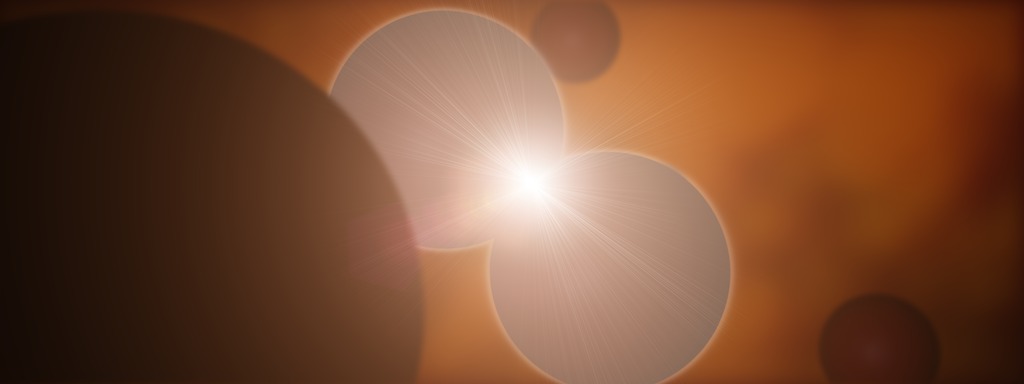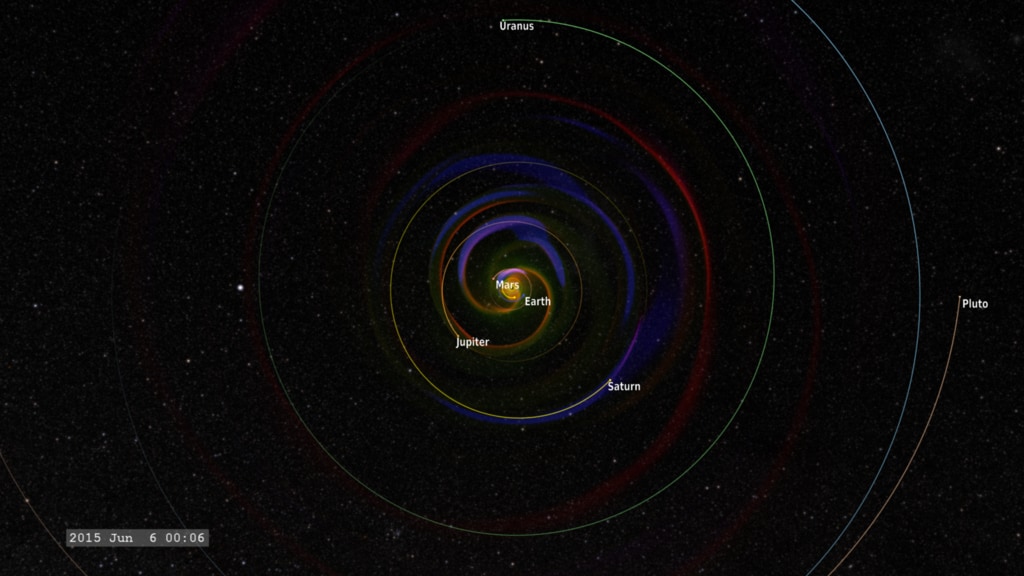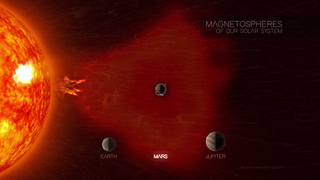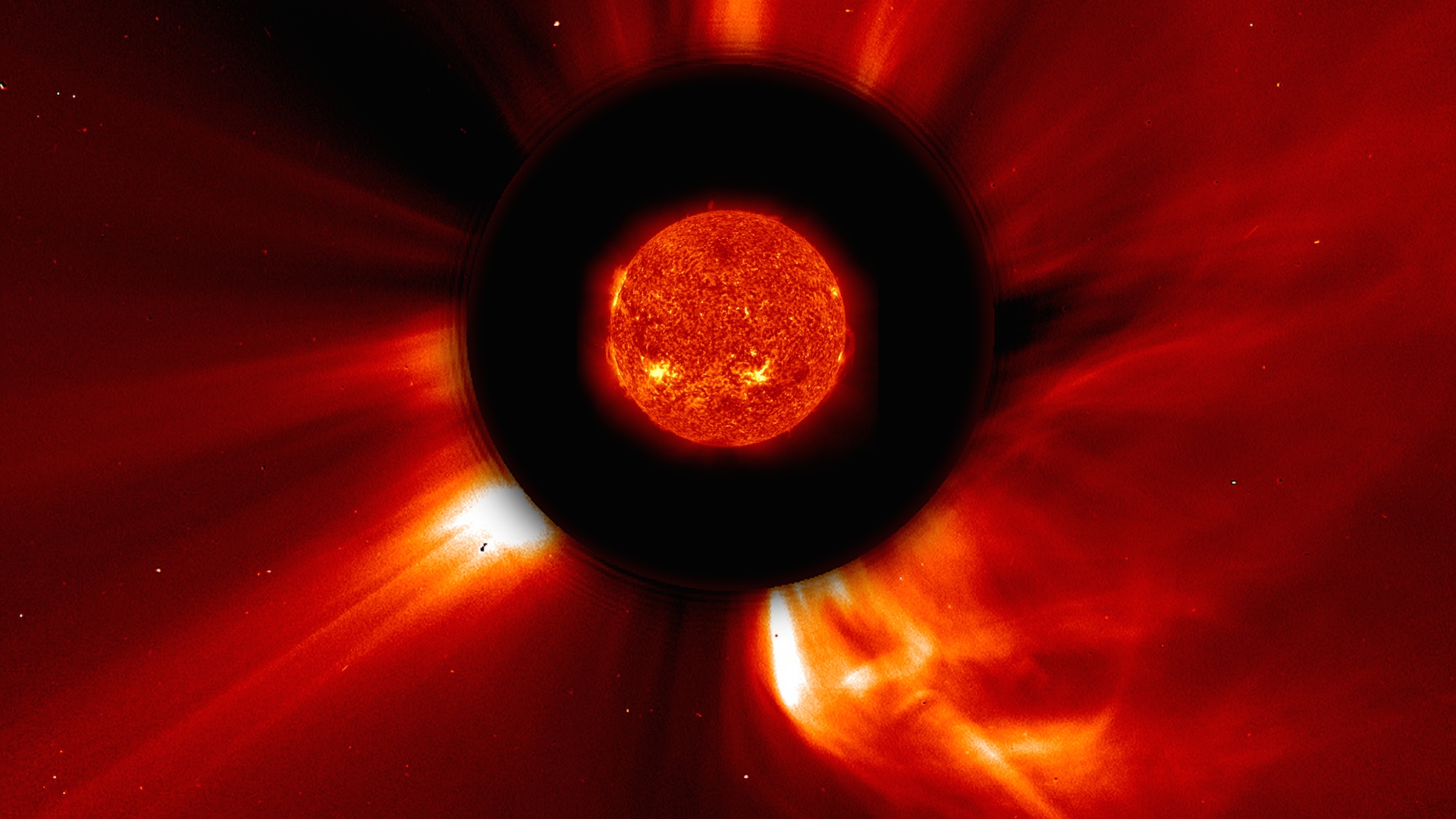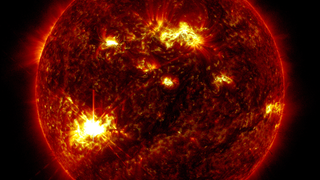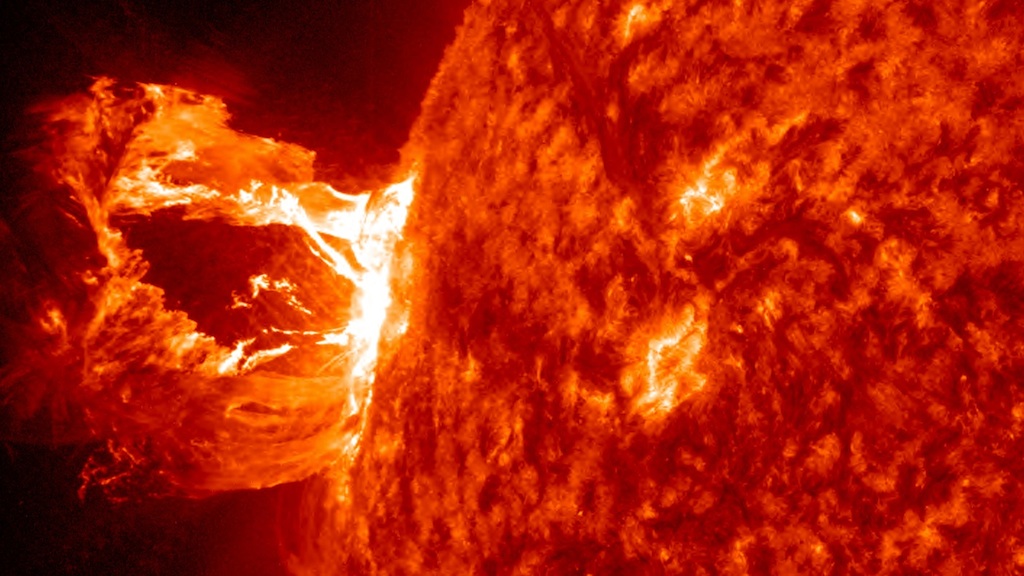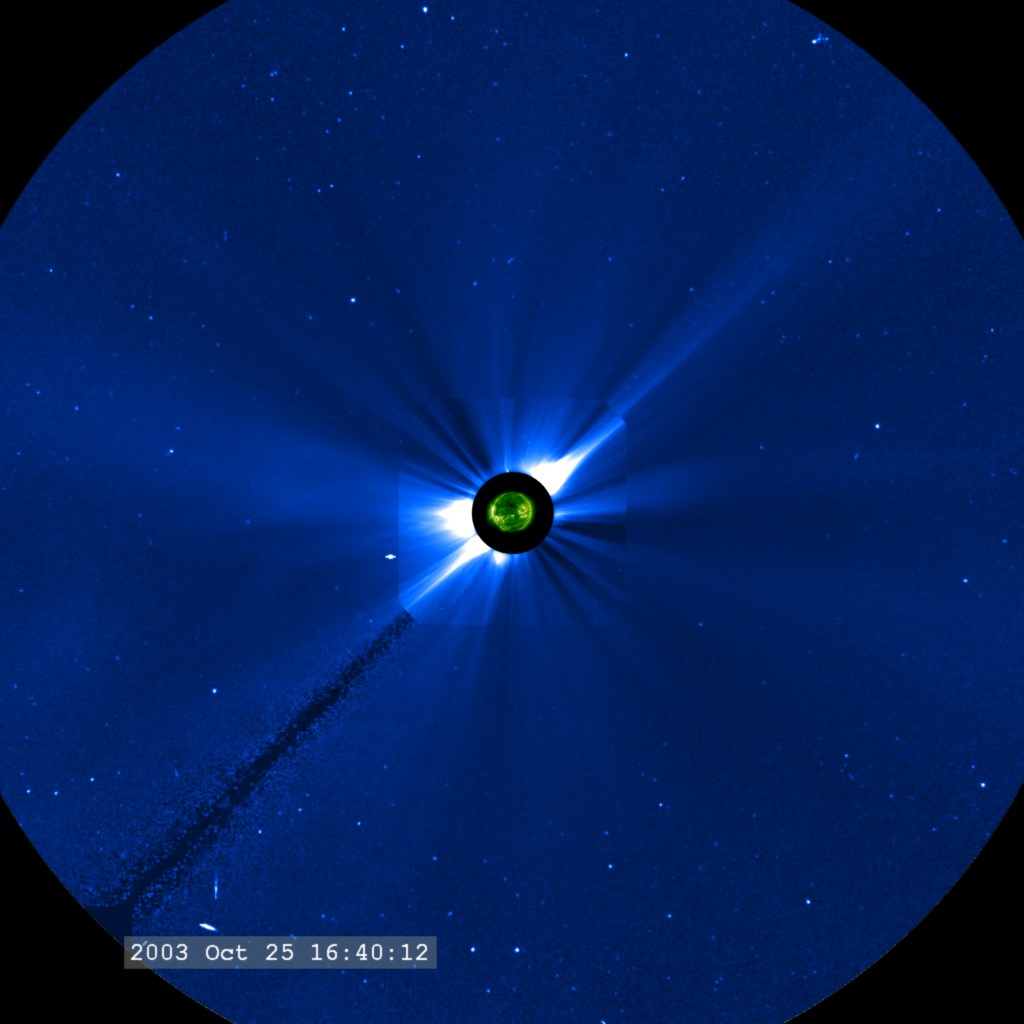PUNCH
Overview
NASA’s Polarimeter to Unify the Corona and Heliosphere, or PUNCH mission, is a constellation of four small satellites in low Earth orbit that will make global, 3D observations of the Sun's corona to better understand how the mass and energy there becomes the solar wind that fills the solar system.
By imaging the Sun’s corona and the solar wind together, scientists hope to better understand the entire inner heliosphere – Sun, solar wind, and Earth – as a single connected system.
The PUNCH mission is led by Southwest Research Institute’s office in Boulder, Colorado. The mission is managed by the Explorers Program Office at NASA’s Goddard Space Flight Center in Greenbelt, Maryland, for NASA’s Science Mission Directorate.
For more information visit science.nasa.gov/mission/punch
PUNCH Imagery
Polarimeter to UNify the Corona and Heliosphere (PUNCH) spacecraft Beauty Passes
Go to this pagePunch beauty pass animation || H_0823_Punch_SunEnding_V01.00001_print.jpg (1024x576) [103.9 KB] || H_0823_Punch_SunEnding_V01.00001_searchweb.png (320x180) [60.1 KB] || H_0823_Punch_SunEnding_V01.00001_thm.png (80x40) [4.3 KB] || H_0823_Punch_SunEnding_1080.mov (1920x1080) [20.5 MB] || H_0823_Punch_SunEnding_h264.mov (3840x2160) [49.4 MB] || H_0823_Punch_SunEnding_V01.webm (3840x2160) [4.2 MB] || H_0823_Punch_SunEnding_V01.mov (3840x2160) [1.1 GB] ||
PUNCH Instruments
Go to this pageNASA’s Polarimeter to Unify the Corona and Heliosphere, or PUNCH mission, is a constellation of four small satellites in low Earth orbit that will make global, 3D observations of the Sun's corona to better understand how the mass and energy there becomes the solar wind that fills the solar system. By imaging the Sun’s corona and the solar wind together, scientists hope to better understand the entire inner heliosphere – Sun, solar wind, and Earth – as a single connected system.Three of the PUNCH satellites will carry a Wide Field Imager (WFI), and the fourth will carry the Narrow Field Imager (NFI).The Narrow Field Imager (NFI)The Narrow Field Image (NFI) is a coronagraph, a type of device that blocks out the bright light from the Sun to better see details in the Sun's outer atmosphere, or corona. The coronagraph will have a similar field of view as the SOHO (Solar and Heliospheric Observatory) Large Angle and Spectrometric Coronagraph (LASCO) C3 field, from 6 to 32 solar radii on the sky, and it will view the corona in both polarized and unpolarized light.Wide Field Imager (WFI)The Wide Field Imager (WFI) is a heliospheric imager, a device that provides views from 18 to 180 solar radii (45 degrees) away from the Sun in the sky. Heliospheric imagers use an artificial “horizon” and deep baffles to view the very faint outermost portion of the solar corona and the solar wind itself. The instrument reduces direct sunlight by over 16 orders of magnitude, which is like the ratio between the mass of a human and the mass of a cold virus. The wide-field imaging optics are based on the design of the famous Nagler eyepieces, which are known among observational astronomers for their clarity, low distortion, wide field, and achromatic focus. Three of the PUNCH spacecraft will carry a WFI instrument. ||
NASA’s SPHEREX and PUNCH Missions Launch from Vandenberg Space Force Base
Go to this pageIgnition, and liftoff! At 11:10 p.m. EDT (8:10 p.m. PDT) March 11, 2025, SpaceX’s Falcon 9 rocket blasted off from Vandenberg Space Force Base’s Space Launch Complex 4 East, carrying NASA’s SPHEREx (Spectro-Photometer for the History of the Universe, Epoch of Reionization and Ices Explorer) and PUNCH (Polarimeter to Unify the Corona and Heliosphere) missions.SPHEREx (Spectro-Photometer for the History of the Universe, Epoch of Reionization and Ices Explorer) will orbit Earth for a two-year prime mission and create a three-dimensional map of the cosmos. This will help scientists answer major questions about what happened in the first second after the big bang, how galaxies form and evolve, and the origins and abundance of water and other key ingredients for life in our galaxy.Ride-sharing with SPHEREx was NASA’s PUNCH (Polarimeter to Unify the Corona and Heliosphere) mission, which will study the outer portion of the Sun, the corona, to understand how solar wind forms.For more information on SPHEREx: nasa.gov/spherexFor more information on PUNCH: science.nasa.gov/mission/punch ||
PUNCH Satellites Arrival at Vandenberg Space Force Base
Go to this pageNASA’s Polarimeter to Unify the Corona and Heliosphere, or PUNCH mission, is a constellation of four small satellites in low Earth orbit that will make global, 3D observations of the Sun's corona to better understand how the mass and energy there becomes the solar wind that fills the solar system.By imaging the Sun’s corona and the solar wind together, scientists hope to better understand the entire inner heliosphere – Sun, solar wind, and Earth – as a single connected system.The PUNCH mission is led by Southwest Research Institute’s office in Boulder, Colorado. The mission is managed by the Explorers Program Office at NASA’s Goddard Space Flight Center in Greenbelt, Maryland, for NASA’s Science Mission Directorate. ||
PUNCH Assembly and Testing
Go to this pageNASA’s Polarimeter to Unify the Corona and Heliosphere, or PUNCH mission, is a constellation of four small satellites in low Earth orbit that will make global, 3D observations of the Sun's corona to better understand how the mass and energy there becomes the solar wind that fills the solar system.By imaging the Sun’s corona and the solar wind together, scientists hope to better understand the entire inner heliosphere – Sun, solar wind, and Earth – as a single connected system.The PUNCH mission is led by Southwest Research Institute’s office in Boulder, Colorado. The mission is managed by the Explorers Program Office at NASA’s Goddard Space Flight Center in Greenbelt, Maryland, for NASA’s Science Mission Directorate. ||
PUNCH Satellites Solar Array Deployment Test
Go to this pageNASA’s Polarimeter to Unify the Corona and Heliosphere, or PUNCH mission, is a constellation of four small satellites in low Earth orbit that will make global, 3D observations of the Sun's corona to better understand how the mass and energy there becomes the solar wind that fills the solar system.By imaging the Sun’s corona and the solar wind together, scientists hope to better understand the entire inner heliosphere – Sun, solar wind, and Earth – as a single connected system.The PUNCH mission is led by Southwest Research Institute’s office in Boulder, Colorado. The mission is managed by the Explorers Program Office at NASA’s Goddard Space Flight Center in Greenbelt, Maryland, for NASA’s Science Mission Directorate. ||
PUNCH Satellites Test Operations at Vandenberg Space Force Base
Go to this pageNASA’s Polarimeter to Unify the Corona and Heliosphere, or PUNCH mission, is a constellation of four small satellites in low Earth orbit that will make global, 3D observations of the Sun's corona to better understand how the mass and energy there becomes the solar wind that fills the solar system.By imaging the Sun’s corona and the solar wind together, scientists hope to better understand the entire inner heliosphere – Sun, solar wind, and Earth – as a single connected system.The PUNCH mission is led by Southwest Research Institute’s office in Boulder, Colorado. The mission is managed by the Explorers Program Office at NASA’s Goddard Space Flight Center in Greenbelt, Maryland, for NASA’s Science Mission Directorate. ||
PUNCH Satellites Integration and Testing
Go to this pageNASA’s Polarimeter to Unify the Corona and Heliosphere, or PUNCH mission, is a constellation of four small satellites in low Earth orbit that will make global, 3D observations of the Sun's corona to better understand how the mass and energy there becomes the solar wind that fills the solar system.By imaging the Sun’s corona and the solar wind together, scientists hope to better understand the entire inner heliosphere – Sun, solar wind, and Earth – as a single connected system.The PUNCH mission is led by Southwest Research Institute’s office in Boulder, Colorado. The mission is managed by the Explorers Program Office at NASA’s Goddard Space Flight Center in Greenbelt, Maryland, for NASA’s Science Mission Directorate. ||
Produced Content
NASA's PUNCH Mission
Go to this pageNASA’s Polarimeter to Unify the Corona and Heliosphere, or PUNCH mission, is a constellation of four small satellites in low Earth orbit that will make global, 3D observations of the Sun’s corona to better understand how the mass and energy there becomes the solar wind that fills the solar system.Watch the video to learn how imaging the Sun’s corona and the solar wind together will help scientists better understand the entire inner heliosphere — Sun, solar wind, and Earth — as a single connected system.The PUNCH mission is led by Southwest Research Institute’s office in Boulder, Colorado. The mission is managed by the Explorers Program Office at NASA’s Goddard Space Flight Center in Greenbelt, Maryland, for NASA’s Science Mission Directorate.For more information visit science.nasa.gov/mission/punch ||
PUNCH Mission Media Teleconference
Go to this pageNASA held a media teleconference at 2 p.m. EST on Tuesday, February 4, to share information about the agency’s PUNCH (Polarimeter to Unify the Corona and Heliosphere) mission, which is targeted to launch no earlier than Thursday, February 27, 2025.The agency’s PUNCH mission is a constellation of four small satellites. When they arrive in low Earth orbit, the satellites will make global, 3D observations of the Sun’s outer atmosphere, the corona, and help NASA learn how the mass and energy there become solar wind. By imaging the Sun’s corona and the solar wind together, scientists hope to better understand the entire inner heliosphere – Sun, solar wind, and Earth – as a single connected system.The PUNCH mission will share a ride to space with NASA’s SPHEREx (Spectro-Photometer for the History of the Universe, Epoch of Reionization and Ices Explorer) space telescope on a SpaceX Falcon 9 rocket from Space Launch Complex 4 East at Vandenberg Space Force Base in California.The Southwest Research Institute in Boulder, Colorado, leads the PUNCH mission. The mission is managed by the Explorers Program Office at NASA’s Goddard Space Flight Center in Greenbelt, Maryland, for NASA’s Science Mission Directorate in Washington.To learn more about PUNCH, please visit: nasa.gov/punch ||
Touching the Sun with Solar Stones
Go to this pageIn August 2024, the Heliophysics Big Year theme is Kids and Education. In collaboration with NASA’s PUNCH (Polarimeter to Unify the Corona and Heliosphere) mission and the Colorado School for the Deaf and Blind, Creative Technology and Design students at the ATLAS Institute at University of Colorado Boulder have developed tactile representations of what many scholars believe to be the earliest known record of solar observations. Titled “Solar Stones,” the exhibit displays two famous petroglyphs, or rock carvings, found in Chaco Culture National Historical Park located in northwestern New Mexico. One petroglyph is believed to represent a total solar eclipse occurring on July 11, 1097, and the other a solar marker that indicates the annual equinoxes and solstices. The project is on display at Fiske Planetarium located on the University of Colorado Boulder campus.The Heliophysics Big Year is a global celebration of the Sun’s influence on Earth and the entire solar system. From Oct. 14, 2023, to Dec. 24, 2024, we are challenging you to participate in as many Sun-related activities as you can.For each month from October 2023 to December 2024, the Heliophysics Big Year will celebrate under a theme, sharing opportunities to participate in many solar science events from watching eclipses to joining citizen science projects. During the Heliophysics Big Year, participation isn’t limited to science – NASA invites everyone to celebrate the Sun with activities including dance, fashion, sustainability, and more. ||
Space Weather Animations
Animation: Heliosphere
Go to this pageThe sun sends out a constant flow of charged particles called the solar wind, which ultimately travels past all the planets to some three times the distance to Pluto before being impeded by the interstellar medium. This forms a giant bubble around the sun and its planets, known as the heliosphere. NASA studies the heliosphere to better understand the fundamental physics of the space surrounding us - which, in turn, provides information regarding space throughout the rest of the universe, as well as regarding what makes planets habitable.The solar wind is a gas of charged particles known as plasma, a state of matter governed by its own set physical laws just as the more common solids, liquids, and gases are. As the solar wind sweeps out into space, it creates a space environment filled with radiation as well as magnetic fields that trail all the way back to the sun. This space environment is augmented by interstellar cosmic rays and occasional concentrated clouds of solar material that burst off the sun, known as coronal mass ejections.This complex environment surrounds the planets and ultimately has a crucial effect on the formation, evolution, and destiny of planetary systems. For one thing, our heliosphere acts as a giant shield, protecting the planets from galactic cosmic radiation. Earth is additionally shielded by its own magnetic field, the magnetosphere, which protects us not only from solar and cosmic particle radiation but also from erosion of the atmosphere by the solar wind. Planets without a shielding magnetic field, such as Mars and Venus, are exposed to such processes and have evolved differently.NASA's studies of the heliosphere include research into: how the solar wind behaves near Earth; what causes and sustains magnetic and electric fields around other planets; how does the heliosphere interact with the interstellar medium; what do the boundaries of the heliosphere look like; what is the origin and evolution of the solar wind and the interstellar cosmic rays; and what contributes to the habitability of exoplanets.The field is, therefore, intensely cross-disciplinary. Heliospheric research often works hand in hand with planetary scientists, astrophysicists, astrobiologists, and space weather researchers.NASA heliophysics missions contributing to heliospheric research are: the Advanced Composition Explorer; NOAA's Deep Space Climate Observatory, the Interstellar Boundary Explorer, the Solar Terrestrial Relations Observatory; Voyager, and Wind. ||
Excerpt from "Dynamic Earth"
Go to this pageA giant explosion of magnetic energy from the sun, called a coronal mass ejection, slams into and is deflected completely by the Earth's powerful magnetic field. The sun also continually sends out streams of light and radiation energy. Earth's atmosphere acts like a radiation shield, blocking quite a bit of this energy.Much of the radiation energy that makes it through is reflected back into space by clouds, ice and snow and the energy that remains helps to drive the Earth system, powering a remarkable planetary engine — the climate. It becomes the energy that feeds swirling wind and ocean currents as cold air and surface waters move toward the equator and warm air and water moves toward the poles — all in an attempt to equalize temperatures around the world.A jury appointed by the National Science Foundation (NSF) and Science magazine has selected "Excerpt from Dynamic Earth" as the winner of the 2013 NSF International Science and Engineering Visualization Challenge for the Video category. This animation will be highlighted in the February 2014 special section of Science and will be hosted on ScienceMag.org and NSF.govThis animation was selected for the Computer Animation Festival's Electronic Theater at the Association for Computer Machinery's Special Interest Group on Computer Graphics and Interactive Techniques (SIGGRAPH), a prestigious computer graphics and technical research forum. This is an excerpt from the fulldome, high-resolution show 'Dynamic Earth: Exploring Earth's Climate Engine.' The Dynamic Earth dome show was selected as a finalist in the Jackson Hole Wildlife Film Festival Science Media Awards under the category "Best Immersive Cinema - Fulldome". ||
Solar Energetic Particles
Go to this pageThe Sun goes through phases of strong activity, during which eruptions can occur. Such eruptions can have multiple components, including X rays, coronal mass ejection plasma, and solar energetic particles – bursts or events of fast-moving particles. These events can occur suddenly and have the potential to rapidly change the radiation environment of wide swaths of the inner solar system where they may create hazardous conditions. Not only are such conditions dangerous for humans in space, but the intense ionizing radiation can also affect the interior of spacecraft, including sensitive electronics. Solar energetic particles can reach all regions of near-Earth space, including the lunar surface, with the exception of low-altitude and low-latitude Earth orbit, where the Earth’s magnetic field is strong enough to form a protective barrier. ||
Space Weather
Go to this pageThis movie takes us on a space weather journey from the center of the sun to solar eruptions in the sun's atmosphere all the way to the effects of that activity near Earth. The view starts in the core of the sun where atoms fuse together to create light and energy. Next we travel toward the sun's surface, watching loops of magnetic fields rise up to break through the sun's atmosphere, the corona. In the corona is where we witness giant bursts of radiation and energy known as solar flares, as well as gigantic eruptions of solar material called coronal mass ejections or CMEs. The movie follows one of these CME's toward Earth where it impacts and compresses Earth's own protective magnetic bubble, the magnetosphere. As energy and particles from the sun funnel along magnetic field lines near Earth, they ultimately produce aurora at Earth's poles. ||
Space Weather to the Edge of the Solar System - Revisited
Go to this pageCropped view of the Enlil model from early 2015 to just after the New Horizons flyby of Pluto. || NewHorizons.topfixed.HD1080frames.clockSlate_HAE.HD1080i.01000_print.jpg (1024x576) [97.2 KB] || NewHorizons.topfixed.HD1080frames.clockSlate_HAE.HD1080i.01000_searchweb.png (320x180) [79.1 KB] || NewHorizons.topfixed.HD1080frames.clockSlate_HAE.HD1080i.01000_thm.png (80x40) [5.0 KB] || TopView (1920x1080) [0 Item(s)] || NewHorizons.topfixed_HAE.HD1080i_p30.mp4 (1920x1080) [41.0 MB] || NewHorizons.topfixed_HAE.HD1080i_p30.webm (1920x1080) [6.6 MB] || TopView (3840x2160) [0 Item(s)] || NewHorizons.topfixed_HAE.UHD3840_2160p30.mp4 (3840x2160) [125.3 MB] || NewHorizons.topfixed_HAE.HD1080i_p30.mp4.hwshow [202 bytes] ||
NASA, NOAA Announce That the Sun Has Reached the Solar Maximum Period
Go to this sectionIn a teleconference with reporters on Tuesday, October 15, 2024, representatives from NASA, the National Oceanic and Atmospheric Agency (NOAA), and the Solar Cycle Prediction Panel announced the Sun has reached its solar maximum period.The solar cycle is the natural cycle of the Sun as it transitions between low and high activity. Roughly every 11 years, at the height of the solar cycle, the Sun’s magnetic poles flip — on Earth, that’d be like the North and South Poles swapping places every decade — and the Sun transitions from sluggish to active and stormy.During the most active part of the cycle, known as solar maximum, the Sun can unleash immense explosions of light, energy, and solar radiation — all of which create conditions known as space weather. Space weather can affect satellites and astronauts in space, as well as communications systems — such as radio and GPS — and power grids on Earth. When the Sun is most active, space weather events become more frequent. Solar activity, such as the storm in May 2024, has led to increased aurora visibility and impacts on satellites and infrastructure in recent months.Listen to the media telecon.Read NASA's article about the news.
Magnetospheres of our Solar System
Go to this sectionA magnetosphere is the magnetic field shields a planet against the Sun's dangerous radiation. Not all magnetospheres are alike. This animation depicts the unique magnetospheres around Earth, Mars, and Jupiter. To demonstrate their strength, each planet's magnetosphere receives a direct hit from a coronal mass ejection (CME) - a cloud of dense radiation and magnetic field from the Sun. The impact of the CME on the planet depends on the strength of the magnetosphere. On Mars, the magnetosphere is weak and patchy, resulting in some loss of the planet's atmosphere. At Earth, the magnetosphere acts as a buffer, deforming from the impact, but protecting the planet. For Jupiter, the punch of the CME is barely felt by the massive magnetic field.
Coronal Mass Ejections Reach the Heliopause
Go to this pageCoronal mass ejections (CME) can propagate from the Sun to the boundary with interstellar space. || Movie of CME material reaching the heliopause. || Helio_pre.00002_print.jpg (1024x691) [67.5 KB] || Helio_pre.jpg (320x197) [7.2 KB] || Heliosphere_pre.jpg (320x238) [9.3 KB] || 1280x720_16x9_60p (1280x720) [0 Item(s)] || Helio.webmhd.webm (960x540) [4.2 MB] || HelioHD0200.mp4 (1280x720) [5.5 MB] || Helio.mpg (720x486) [3.2 MB] || Heliosphere.mpg (352x240) [3.2 MB] ||
Solar Activity
SDO Video Toolkit
Go to this pageThe Trebuchet eruption (upper left) as seen in the SDO AIA 304 angstrom filter. This is probably one of the more popular views of the event.4k source files || New_Trebuchet_mkII.00300_print.jpg (1024x576) [336.5 KB] || New_Trebuchet_mkII.00300_print_searchweb.png (320x180) [95.4 KB] || New_Trebuchet_mkII.00300_print_thm.png (80x40) [6.2 KB] || New_Trebuchet_mkII.mp4 (1920x1080) [32.4 MB] || New_Trebuchet_mkII.webm (1920x1080) [3.7 MB] || New_Trebuchet_mkII.mov (1920x1080) [443.3 MB] ||
NASA's Many Views of a Massive CME
Go to this pageOn July 23, 2012, a massive cloud of solar material erupted off the sun's right side, zooming out into space. It soon passed one of NASA's Solar Terrestrial Relations Observatory, or STEREO, spacecraft, which clocked the CME as traveling between 1,800 and 2,200 miles per second as it left the sun. This was the fastest CME ever observed by STEREO. Two other observatories – NASA's Solar Dynamics Observatory and the joint European Space Agency/NASA Solar and Heliospheric Observatory — witnessed the eruption as well. The July 2012 CME didn't move toward Earth, but watching an unusually strong CME like this gives scientists an opportunity to observe how these events originate and travel through space. STEREO's unique viewpoint from the sides of the sun combined with the other two observatories watching from closer to Earth helped scientists create models of the entire July 2012 event. They learned that an earlier, smaller CME helped clear the path for the larger event, thus contributing to its unusual speed. Such data helps advance our understanding of what causes CMEs and improves modeling of similar CMEs that could be Earth-directed. ||
May 2-10, 2024 : A Busy Week of Flares
Go to this pageProduced VideoWatch this video on the NASA Goddard YouTube channel.Music Credit: “Halos” from the album Burning Clouds. Written and produced by Lars Leonhard. https://ultimae.bandcamp.com/track/halos || 14588_FlareRecap_thumbnail.jpg (1280x720) [205.8 KB] || 14588_FlareRecap_X.mp4 (1920x1080) [138.1 MB] || 14588_FlareRecap_YT.mp4 (1920x1080) [337.5 MB] || 14588FlareRecapCaptions.en_US.srt [1.5 KB] || 14588FlareRecapCaptions.en_US.vtt [1.4 KB] || 14588_FlareRecap_ProRes.mov (1920x1080) [3.2 GB] ||
Continuing Strong Solar Flares: May 15-16, 2024
Go to this pageDuring the week of May 10 to May 16, 2024, NASA’s Solar Dynamics Observatory (SDO) observed nine X-class solar flares erupting from the Sun, including the largest in this solar cycle to date on May 14 that peaked at X8.7.This video shows these flares using SDO observations in two wavelengths of extreme ultraviolet light, 131 angstroms (colorized as teal) and 171 angstroms (colorized as gold).These flares originated primarily from an active region on the Sun called AR 13664. This region, along with another called AR 13663, was responsible for the majority of strong solar flares from May 3 through May 9.Watch this video on the NASA Goddard YouTube channel.Music credit: "Collab Alert" by Ellis Kent [PRS] from Universal Production Music || Thumbnail02.jpg (1280x720) [818.1 KB] || 14593_X-ClassFlaresDominateSunInMay_1080_YouTube.mp4 (1920x1080) [221.9 MB] || XClassFlares.en_US.srt [1.4 KB] || XClassFlares.en_US.vtt [1.3 KB] || 14593_X-ClassFlaresDominateSunInMay_4K_Facebook.mp4 (3840x2160) [328.8 MB] || 14593_X-ClassFlaresDominateSunInMay_4K_YouTube.mp4 (3840x2160) [539.4 MB] || 14593_X-ClassFlaresDominateSunInMay_4K_ProRes_.mov (3840x2160) [7.2 GB] ||
Sun Releases 50th X flare of Solar Cycle 25, Quickly Followed by Two More
Go to this pageNASA’s Solar Dynamics Observatory captured this image of a solar flare – as seen in the bright eruption on the lower left – at 22:03 UTC on May 31, 2024. The image shows a blend of 131 Angstrom and 304 Angstrom light, subsets of extreme ultraviolet light. Credit: NASA/SDO || SDO_May31_2024_2204_131_304_2.jpg (4096x4096) [2.9 MB] || SDO_May31_2024_2204_131_304_2_searchweb.png (320x180) [83.2 KB] || SDO_May31_2024_2204_131_304_2_thm.png (80x40) [6.2 KB] ||
Solar Activity Continues to Rise with 'Anemone' Eruption
Go to this pageShort video showing the solar flare and subsequent prominence eruption and "arcade" of loops.Credit: NASA/GSFC/SDOMusic: "Beautiful Awesome" from Universal Production MusicWatch this video on the NASA Goddard YouTube channel.Complete transcript available. || Anemone_Eruption_131-171_Blend.jpg (1920x1080) [281.9 KB] || Anemone_Eruption_131-171_Blend_searchweb.png (180x320) [78.6 KB] || Anemone_Eruption_131-171_Blend_thm.png (80x40) [6.6 KB] || 13778_Anemone_Eruption_ProRes_1920x1080_2997.mov (1920x1080) [2.0 GB] || 13778_Anemone_Eruption_Best_1080.mp4 (1920x1080) [718.2 MB] || 13778_Anemone_Eruption_1080.mp4 (1920x1080) [220.6 MB] || 13778_Anemone_Eruption_Best_1080.webm (1920x1080) [16.0 MB] || AnemoneEruption_SRT_Captions.en_US.srt [500 bytes] || AnemoneEruption_SRT_Captions.en_US.vtt [513 bytes] ||
Space Weather Forecast
Go to this pageThe sun goes through a natural cycle approximately every 11 years, hitting peaks and valleys of solar activity. The cycle is marked by the increase and decrease of sunspots—visible as dark blemishes on the sun's surface and connected to eruptions such as solar flares and coronal mass ejections. The largest number of sunspots in any given solar cycle is designated as "solar maximum," and this next peak of activity is predicted to occur in 2013. The eruptions that occur during solar maximum can't harm humans on Earth. But scientists observe this activity, what they call space weather, because it can affect satellites in orbit and disrupt power grids on the ground. Watch the movie to see the kind of gigantic, and often beautiful, eruptions we expect to see more of in 2013. ||
Halloween Solar Storms - 2003
Go to this pageThis is a 1024x1024 pixel version of solar storms providing a more complete view of the SOHO/LASCO/C3 field-of-view.Here is a view of the solar disk in 195 Å ultraviolet light (colored green in this movie) and the Sun's extended atmosphere, or corona, (blue and white in this movie). The corona is visible to the SOHO/LASCO coronagraph instruments, which block the bright disk of the Sun so the significantly fainter corona can be seen. In this movie, the inner coronagraph (designated C2) is combined with the outer coronagraph (C3). This movie covers a two week period in October and November 2003 which exhibited some of the largest solar activity events since the advent of space-based solar observing.As the movie plays, we can observe a number of features of the active Sun. Long streamers radiate outward from the Sun and wave gently due to their interaction with the solar wind. The bright white regions are visible due to their high density of free electrons which scatter the light from the photosphere towards the observer. Protons and other ionized atoms are there as well, but are not as visible since they do not interact with photons as strongly as electrons. Coronal Mass Ejections (CMEs) are occasionally observed launching from the Sun. Some of these launch particle events which can saturate the cameras with snow-like artifacts.Also visible in the coronagraphs are stars and planets. Stars are seen to drift slowly to the right, carried by the relative motion of the Sun and the Earth. The planet Mercury is visible as the bright point moving left of the Sun. The horizontal 'extension' in the image is called 'blooming' and is due to a charge leakage along the readout wires in the CCD imager in the camera. ||
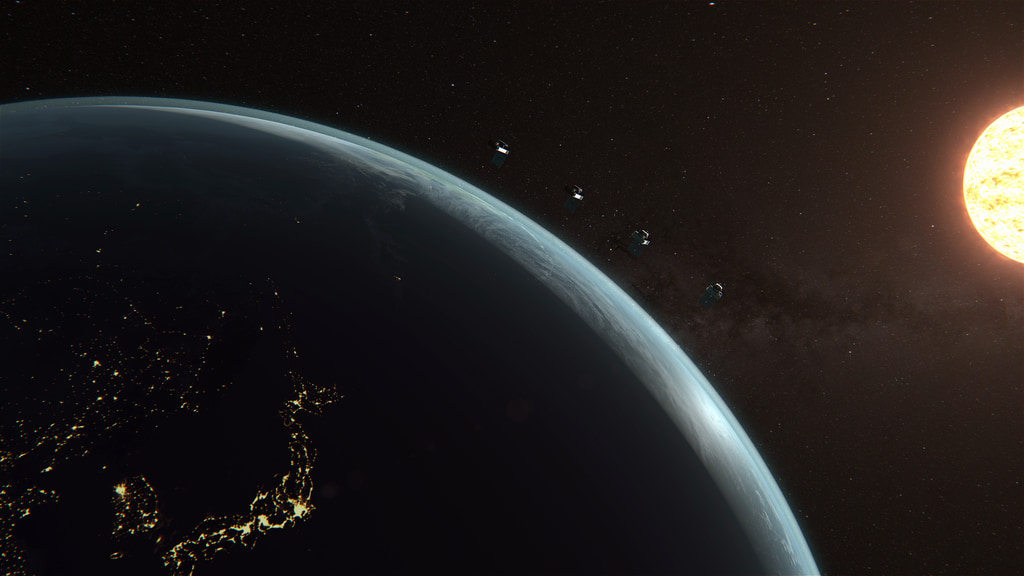
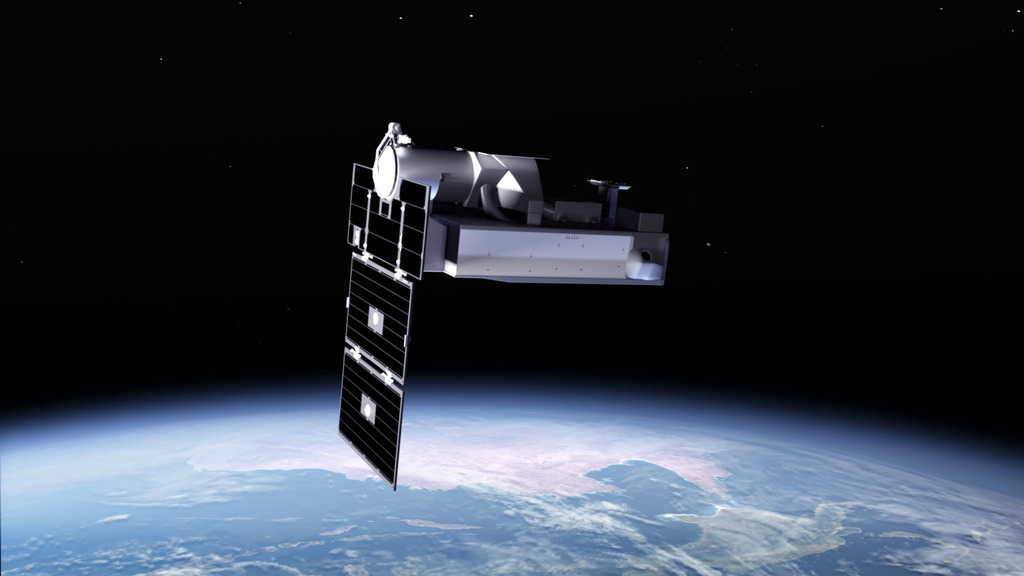
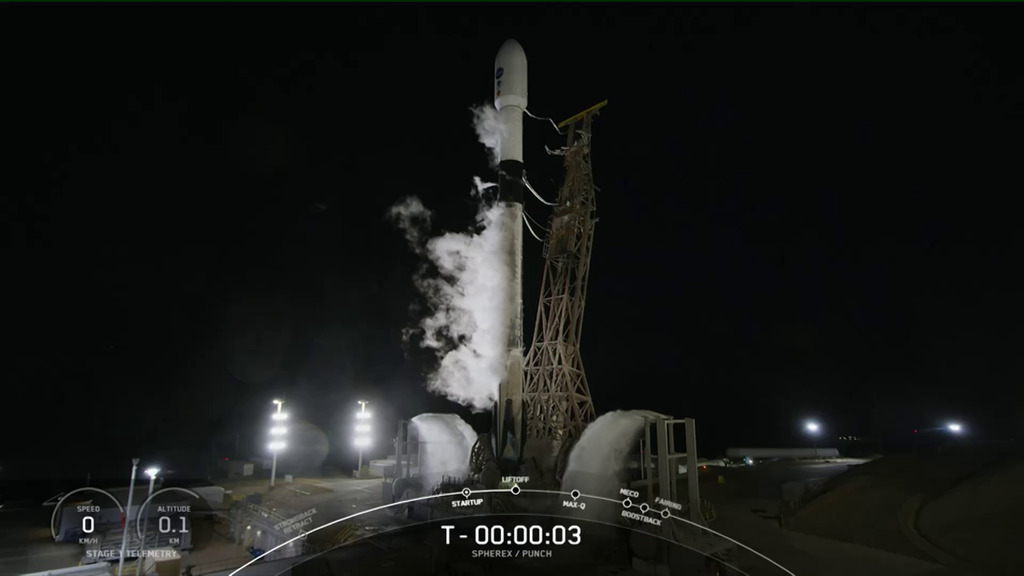
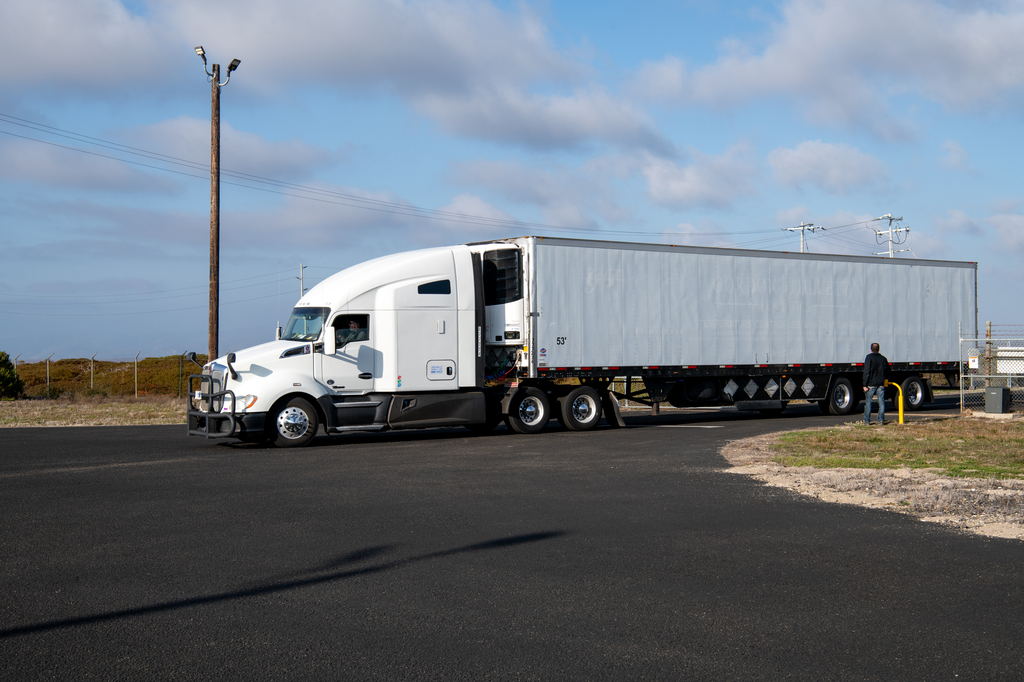

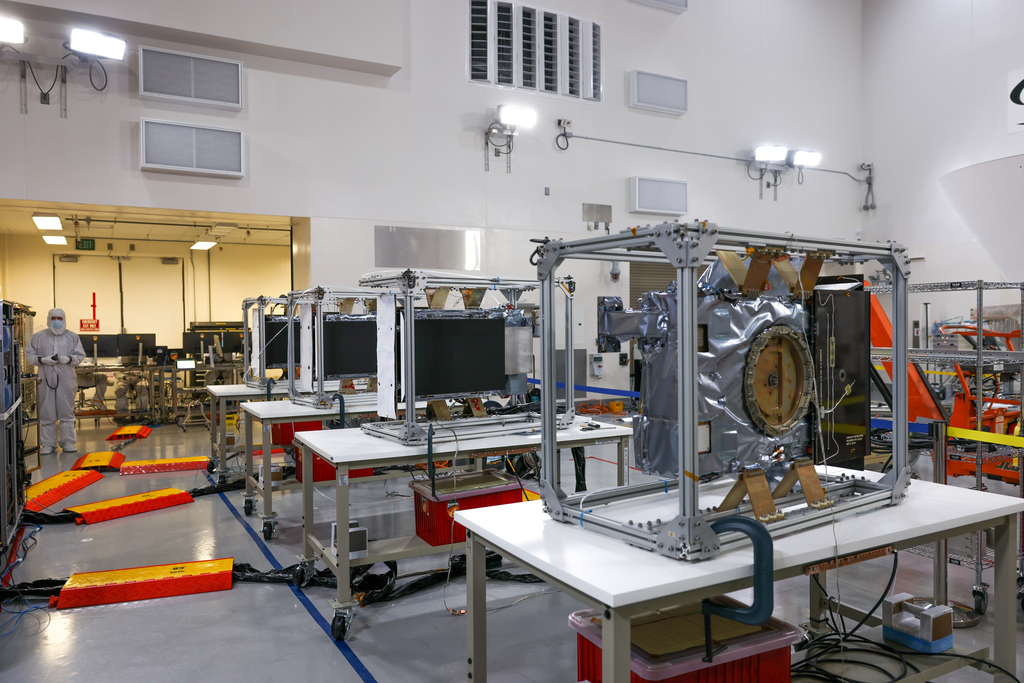
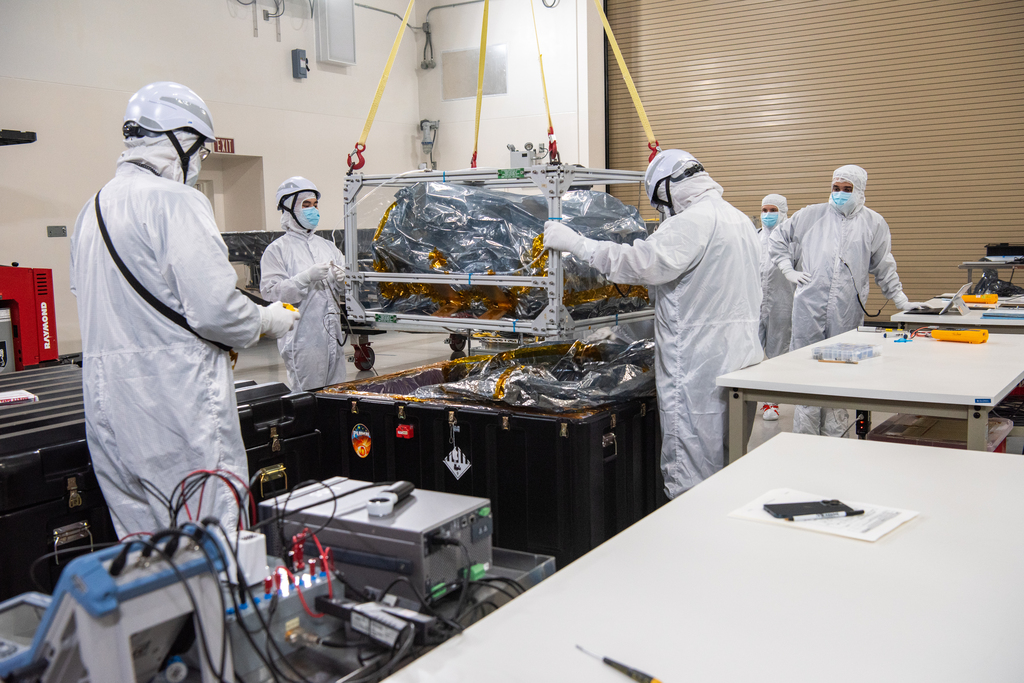
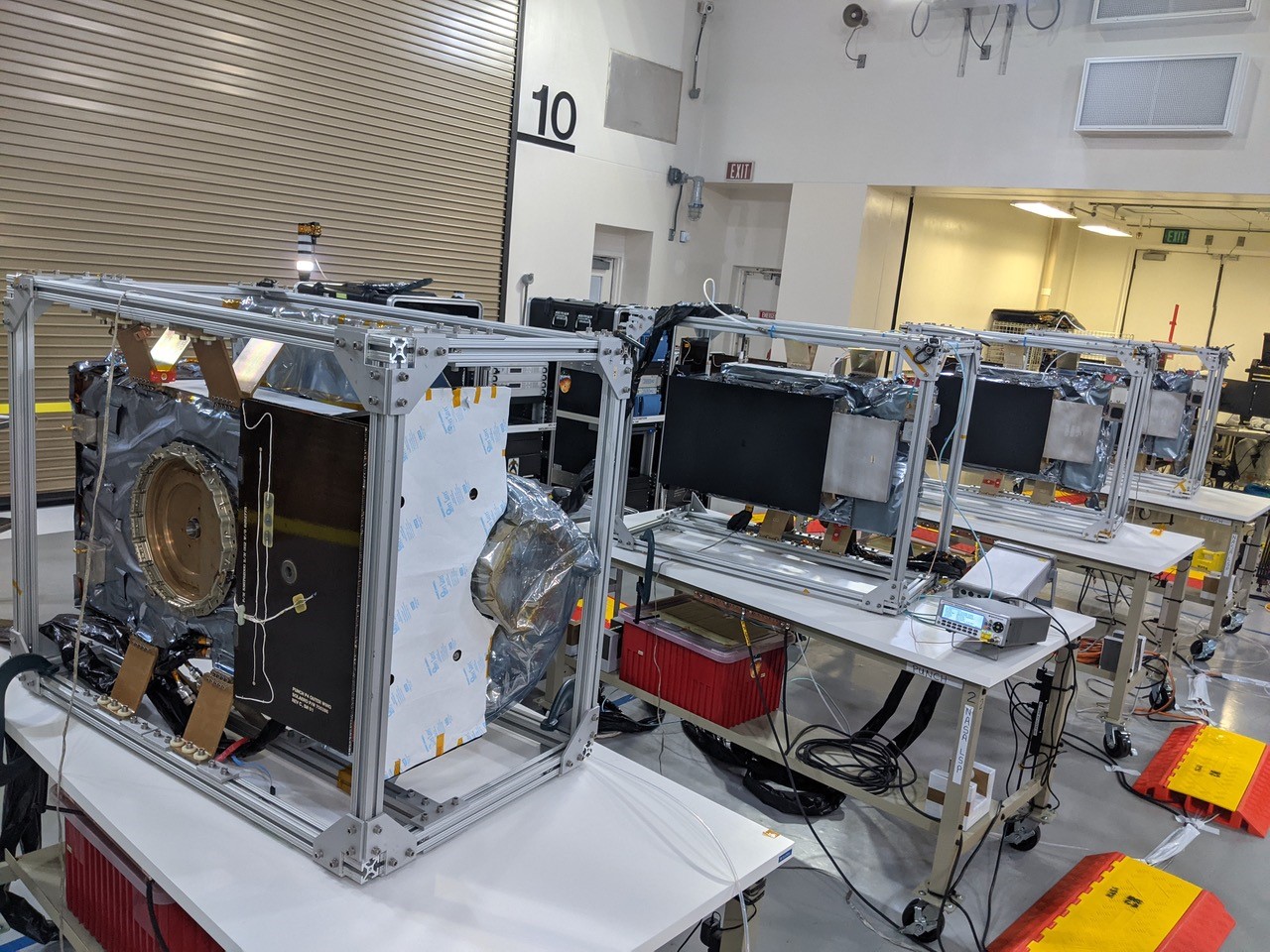
![Watch this video on the NASA Goddard YouTube channel.Music Credit: “Crafted with Science Instrumental” by Zak McNeil [ASCAP] via Universal Production MusicVideo Credit: NASA/Beth Anthony](/vis/a010000/a014700/a014773/PUNCH_thumb.png)

![Music Credit: “Glass Eyes” by Evan William Conway [ASCAP] via Universal Production Music](/vis/a010000/a014600/a014640/PUNCH_SolarStones_thumbnail.jpg)



